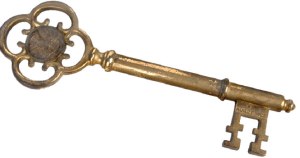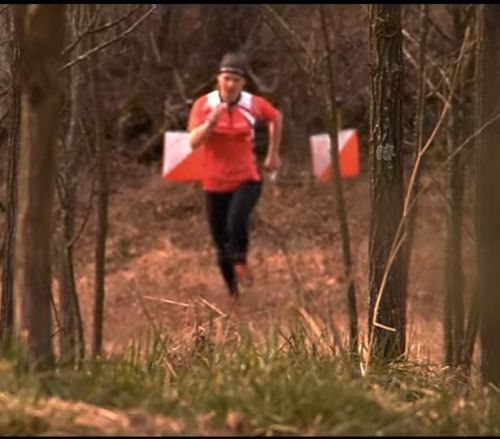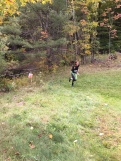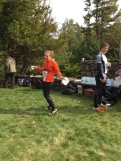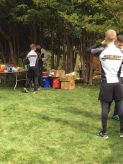A treasure hunt on a detailed and accurate map is an early lesson in orienteering. In Sweden, where orienteering is the national sport, hundreds of lessons for different skills and abilities become the framework for mandatory curriculum implementation. The national geographic Society has developed a roper Poll that is used every three years to determine international skills and abilities with maps. Sweden is at the top and American students are somewhere near the bottom. It is no coincidence.


The object of an orienteering treasure hunt is for the entire group to find the key to the treasure chest. It starts with a fun, musical introduction with instructions about maps and how to ‘read’ a map. A room that comfortably seats everyone is the best way to start. Two classrooms can sit together in a regular sized room, and an all purpose room, a cafeteria or a gym is best for large groups. A large poster sized map is shown to make sure everyone understands the legend and how their school grounds are depicted. There is a lot of energy in the crowd as they get excited to get their maps and get started. Kids move in groups and work together to locate clues that will help them to discover the key. It is not a competition as everyone will find every clue. Maps provide a unique template for everyone to learn and have fun on.
It is not a scavenger hunt! They are not finding clues because they stumble across them or have decoded a verbal clue to take them to a place. They are looking at a map, turning it so it is a birds’-eye-view, and determining where to go next. Each group focuses on their own mission. To ‘watch’ or ‘follow’ another group would deter them from their task and right off, it becomes clear that what other groups are doing won’t help their team. They may even follow a group to a clue at the start, like people do, and feel like they gained something, yet when they look at their map, again, they discover that they aren’t sure where they are on the map. They have a new discussion and the followed group is gone. There is a wonderful analogy to following people without considering what is best for yourself that kids grasp because it is relevant to this game. It useful when they are pre-teens and need a thoughtful discussion about peers, too. All of the typical judgments of that age group: popularity, grades, money, sports, etc, also drop away as the focus of the hunt become their shared goal. Each person is important.
For K-3, the relevance of spatial awareness, observational skills and working together become paramount as they look around the area and find themselves on the map. They become more and more confident on the map as they actually find the clues and feel success. We have the kids pass the map to another group member at each clue so that everyone has a turn to lead. In smaller groups of 2-3, we have them each have a map, yet must stay together.
Once the clues are found; sweaty, happy, little treasure hunters return to the chest to see what to do next. There is a lot of noise as they describe how they found their clues and tell funny little stories. It can be completed outside or inside depending on the schools schedule and the size of the group. Any bit of light competition dissolves as they realize that each team’s information is needed to solve the puzzle and help them find the key. When they find the key, there is a unified squeal of success and they know the treasure is about to be revealed. The school is responsible for the treasure. It does not need to be of high monetary value. We see little bracelets, pencils, fruit snacks, ice cream vouchers for later, tootsie rolls (gluten free), and little sewn pirate bags of goodies from the parents.
As students become more proficient and confident on a map, using maps of the schools both inside and outside, the area and detail is expanded. Difficulty should be increased in small amounts so that all kids stay confident and wanting more. It isn’t true that some of us are navigationally challenged. What is true is that our early introduction to maps was neither easy nor fun enough. The treasure hunt leaves them ready for another map game because it is fun and rewarding as they grow a little bit more confident each time. The use of compass is obvious when they have no features to help navigate. Schoolyard maps teach them how to use all resources around them. In the US, navigation lessons have descended from our military to the scouts to teachers. Using a compass to triangulate or determine degrees for taking a bearing isn’t about the map! So, hold off on that compass and make sure kids love maps. Facilitate treasure hunts, relays, SCRABBLE-O, Time Line-O, Motalas, map making, and a plethora of other map games. Students will never be lost adults but will be leaders, instead!
Can you find it??
